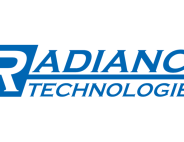
CIOs & CDOs: All in the Same Boat?
01 Jun, 2017
By Martin Krill
Digitization is leaving a profound mark on our economy and society. Anyone who helps push these changes through and develops the right business models has the best possible chance for success. Therefore, many companies are currently busy developing and implementing large-scale digitization strategies. There are different approaches to the implementation of each strategy.
Some companies set up “Digitization LLCs” while others push the issue completely into the lap of the IT department, and thus directly to the CIO. In some organizations, departments and teams are established to deal with the issue and implement the necessary projects in the company; some large and well-known international companies such as McDonald’s, Toyota, Starbucks, Nestlé and L’Oréal already have a Chief Digital Officer on board.
CIOs and CDOs have different roles
In practice, however, the job content is not always so clearly defined and the areas of responsibility and competence are often poorly delineated.
For many companies, IT – and therefore the CIO – plays a key role. The focus of the CIO is primarily to provide reliable IT services so that all actual value-added processes are supported optimally within the company. The CIO is responsible for the entire infrastructure: from the servers in the data center and networks to databases and individual applications. This also includes IT security and IT support. In consequence, the CIO is responsible to ensure that the day-to-day business functions properly. He needs to constantly monitor the existing software and hardware and provide maintenance services to make sure that no operational complications occur in the company and that all employees are able to carry out their jobs properly. The CIO has specialist IT skills and practical experience in the area of network technology.
The innovative level of IT
In addition, there are other specialist issues within a company that have migrated to IT, but are rather the responsibility of the CDO.
What is important is the innovative level of an IT architecture, the associated technological developments and the potential for the company to recognize these and introduce them at the right time. In addition, the CDO is frequently responsible for strategic direction and continuous improvement of business processes at the IT level; processes that could allow, for example, more efficient workflows, new fields of activity or a market advantage to the company.
The CDO is the one who develops, drives and is ultimately responsible for online strategy and digital transformation. Digitization often enables new business models; other processes and business areas may even lapse. Therefore, the CDO should be directly subordinate to the CEO or the Management Board. It would also be possible to create a department in which the CDO is directly subordinate to the CEO. Unlike the CIO, the CDO is significantly more active in the development of the company. The CDO is a new role within the company – in some cases he will act parallel to the CIO, in others he will take over the tasks of the CIO.
While the CIO holds sway as the “lord of the systems,” the CDO prevails as “master of the business.” The role of the CDO is, however, often only temporary.
There should be no competition between CIO and CDO. This would be counterproductive and is more likely to cause damage to the company than gain access to new markets.
- The CDO should not be seen as a substitute for the CIO. He takes over tasks that the CIO cannot do at the same time. He identifies future markets, ensures that the company remains competitive in the coming years and adapts to the changing markets.
- The sharing out of tasks and focal points must be clearly defined and tightly demarcated.
- The CDO should, just like the CIO, be positioned at ‘C’ level or have at least an executive function and report directly to the CEO or Managing Director. He can also provide the interface to the CIO, CFO, COO and CEO, provided his competences are clearly defined.
- The distribution of manpower resources and budgets to the CDO and CIO should be clearly agreed and set.
- Both areas should see each other as cooperation partners, maybe even as sparring partners, but definitely not as rivals.
From our experience as a personnel consultancy working closely with different clients, it is important to position digitization at board or senior management level and to integrate it into the company’s strategy.
It is also very important to involve staff in the change processes and clearly define the respective competencies and responsibilities.
Related Posts
-

Airbus inaugurates new A320 Final Assembly Line at Mobile facility
-

Welspun Tubular to Invest $150 Million in New LSAW Pipe Mill in Little Rock, Arkansas
-

Whirlpool Corporation Announces $300 Million Investment in U.S. Laundry Operations, Creating 400-600 New Jobs in Ohio
-

Merck Breaks Ground on $3 Billion Center of Excellence for Pharmaceutical Manufacturing in Elkton, Virginia
-

Eos Energy to Relocate Headquarters to Pittsburgh and Expand PA-Based Battery Manufacturing Operations in Allegheny County with $353 Million Investment
-

GE APPLIANCES ANNOUNCES HISTORIC $3 BILLION INVESTMENT TO EXPAND U.S. MANUFACTURING
-

RADIANCE TECHNOLOGIES ANNOUNCES $370 MILLION MICROCHIP FACILITY IN NORTH LOUISIANA TO BOLSTER AND SECURE NATIONAL SUPPLY CHAINS
-

JOHNSON & JOHNSON CONTINUES U.S. INVESTMENT WITH $2 BILLION COMMITMENT TO ENABLE MANUFACTURING AT STATE-OF-THE-ART NORTH CAROLINA FACILITYJOHNSON & JOHNSON CONTINUES U.S. INVESTMENT WITH $2 BILLION COMMITMENT TO ENABLE MANUFACTURING AT STATE-OF-THE-ART NORTH CAROLINA FACILITY
-

stow GROUP TO CREATE 200 JOBS IN GORDON COUNTY, GEORGIA
-

PHILIPS ANNOUNCES PLAN FOR MORE THAN $150 MILLION USD OF NEW INVESTMENT IN MANUFACTURING AND R&D IN THE U.S. TO EXPAND PRODUCTION OF AI-POWERED HEALTH TECHNOLOGY INNOVATIONS









